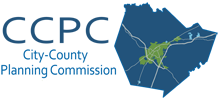On November 15, 2021, President Biden signed the Infrastructure Investment and Jobs Act (IIJA) (Public Law 117-58, also known as the “Bipartisan Infrastructure Law”) into law. The Bipartisan Infrastructure Law is the largest long-term investment in our infrastructure and economy in our Nation’s history. The law authorizes $1.2 trillion for transportation and infrastructure spending with $550 billion of that figure going toward “new” investments and programs.
The passing of this bill has many local and state jurisdictions across the country wondering what and how and when. How much money will our community get? How will the funds be allocated and what kinds of programs or grants will apply to us? When can we see it start to roll in? Where is all this money coming from anyway?
Great questions. And we can’t even pretend to know all the answers, so we’re here to share a few resources about the $1.2 trillion IIJA to help you understand, at least a little bit more.
To start, here’s an infographic helping to show the breakdown of funding dollars:
- Transportation for America monitors all things transportation, but focuses more on a people-first philosophy – prioritizing innovative transportation improvements that enhance life for users, no matter their mode of travel (transit, bicycle, walking, rail, or vehicle). Read this great breakdown here.
- The Federal Highway Administration (FHWA) will be working with other federal agencies to carry out the implementation of the IIJA (or Bipartisan Infrastructure Law). This FHWA resource will provide information for program funding, appropriations, and breaks down the funding into key topics like bridges, electric vehicles, and safety. Read more from FHWA here.
- Here’s a 5-page guide from the National Association of City Transportation Officials (NACTO). This is the best top-line summary of funding and key policies for cities.
While the roll-out and implementation of these funds is still a bit uncertain, the new bill has established new planning emphasis areas, which will help guide metropolitan planning organizations (MPOs), State departments of transportation, Public Transportation Agencies, and Federal Land Management Agency counterparts to future planning endeavors. The IIJA funding opportunities for local jurisdictions will seek to highlight these areas through potential projects.
Here’re the new planning emphasis areas:
- Tackling the Climate Crisis – Transition to a Clean Energy, Resilient Future
- Equity and Justice40 in Transportation Planning
- Complete Streets
- Public Involvement
- Strategic Highway Network/ U.S. Department of Defense Coordination
- Federal Land Management Agency Coordination
- Planning and Environment Linkages (PEL)
- Data in Transportation Planning

